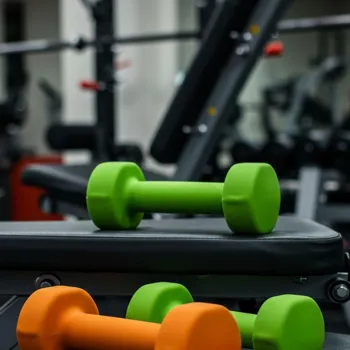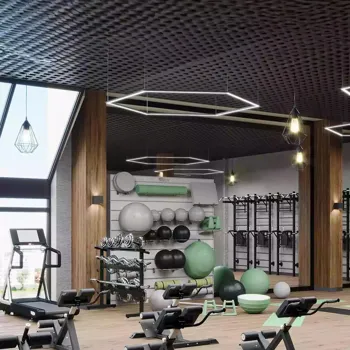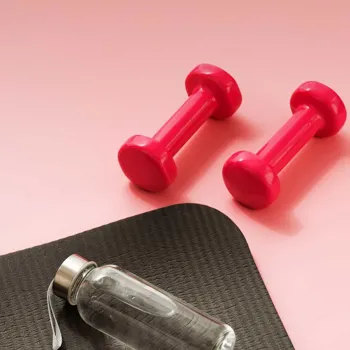Uncover the truth behind 10 common fitness myths in India! Train smarter, not harder. Read on to bust these misconceptions!
Namaste and good health to all our readers! In today's fast-paced world, everyone's
talking about fitness. From Bollywood stars showing off their toned abs to your neighbour diligently going for morning walks, the pressure to stay fit is real.
But with so much information floating around, it's easy to get confused. A lot of what we think we know about fitness is actually, well, totally wrong! Forget those old wives' tales and gym bro science.
We're here to debunk 10 common fitness myths that might be holding you back from reaching your goals. Get ready to separate fact from fiction and finally, train smarter, not just harder! Let's get started!
Spot reduction is a myth; focus on overall fat loss through diet and exercise
We've all been there, haven't we? Doing endless crunches hoping to get rid of that belly fat like magic. Sorry to burst your bubble, but spot reduction is a complete myth. The body doesn’t work that way. You can't just target one area and expect the fat to melt away only from that spot.

When you lose weight, your body sheds fat from everywhere, in a genetic prescribed way. Some people lose from their face first, while others see changes in their legs or arms earlier. Focusing so much on just one area can lead to frustration and discouragement.
Instead of trying to spot reduce, focus on overall fat loss through a balanced diet and regular exercise which burns calories from all over your body. Think full body workouts, like squats or lunges, and a sustainable diet plan filled with protein, complex carbs and healthy fats.
Remember, consistency is key! Also, remember, reducing stress is also a key component, as stress leads to unhealthy eating habits which in turn increases fat storage.
Strength training boosts health and confidence; no fear of bulk
This is a classic myth that scares many Indian women away from strength training. "I don't want to look like a bodybuilder," they say. Let's set the record straight: lifting weights will not magically transform you into a muscular hulk.

Women have significantly lower levels of testosterone than men, which is the hormone responsible for building large muscles. Lifting weights will help you build lean muscle mass, which in turn boosts your metabolism and helps you burn more calories even when you're resting.
It can also improve your bone density, strength, and overall body composition. Strength training is a fantastic way to tone your body, feel stronger, and improve your overall health. Don't be afraid to pick up those dumbbells! Start with lighter weights and focus on proper form.
You'll be surprised at how strong and confident you feel! Think of it this way: you are building strength and endurance in your body, making you feel much lighter and more agile. The end result is more energy and a overall healthier you!
Cardio alone isn't enough for weight loss; add strength training & watch diet for best results
While cardio is definitely a great way to burn calories and improve your cardiovascular health, it's not the only key to weight loss. Many people spend hours on the treadmill or elliptical, thinking that's the only way to shed those extra kilos.

In reality, a combination of cardio and strength training is the most effective approach. Strength training builds muscle, which increases your metabolism and helps you burn more calories even when you're not exercising. It also helps improve your body composition and overall fitness level.
Don't just rely on cardio. Throw in some strength training exercises like squats, lunges, push-ups and planks. You'll see better results and feel much stronger. Moreover, consider looking at your diet as that is usually the biggest contributing factor to lack of weight loss.
Consider cutting down on junk, processed and packed food. Instead choose healthier options. Combine both activities to see tremendous results!
Protein is crucial for health, but excess intake can be harmful
Protein is essential for muscle growth and repair, and it plays a crucial role in a healthy diet. But that doesn't mean you need to eat excessive amounts of protein. Your body can only absorb a certain amount of protein at a time, and eating too much can actually be harmful.

Excess protein can be converted into fat or excreted through urine, putting a strain on your kidneys. The recommended daily protein intake for adults is around 0.8 grams per kilogram of body weight.
If you're an athlete or actively involved in strength training, you may need slightly more, but it's still important to stay within a reasonable range. Choose lean protein sources like lentils, chickpeas, tofu, and sprouts. A balanced diet is key.
While protein is critical for repairing your muscles after a good workout, it is not the only essential component for a healthier body. Consider including the other components such as carbs and fats in your eating decisions.
Fasted cardio debated: not ideal; eat small snack for fuel
Exercising on an empty stomach, also known as fasted cardio, is a hotly debated topic. The theory is that if you don't have any readily available carbohydrates for fuel, your body will burn more fat for energy. Although, it is not recommended to workout on an empty stomach.

While some studies suggest that fasted cardio may lead to a slightly higher fat burning rate during the workout, it doesn't necessarily translate to greater overall fat loss. In fact, working out on an empty stomach can lead to muscle breakdown and reduced performance.
Your body needs fuel to perform optimally. It's better to eat a small, easily digestible snack like a banana or a handful of nuts before your workout. This will provide you with the energy you need to power through your session and get the most out of it.
Eat at least an hour before you begin your workout.
Pushing past pain during workouts can lead to injuries
This is one of the most dangerous fitness myths out there. While it's true that you need to push yourself to see results, pushing yourself to the point of pain is never a good idea. Pain is your body's way of telling you that something is wrong.
Ignoring that signal can lead to injuries that will sideline you for weeks or even months. It's important to differentiate between normal muscle soreness and pain. Muscle soreness is a common and temporary sensation that occurs after a challenging workout.
Pain, on the other hand, is a sharp, persistent feeling that indicates an injury. If you experience pain during exercise, stop immediately and consult a doctor or physical therapist. Listen to your body and don't push yourself too hard, especially when you're just starting out.
There is no replacement to safety when working out. Work with proper technique and form so you are safe when performing exercises.
AI Generated Content. Glance/InMobi shall have no liability for the content









